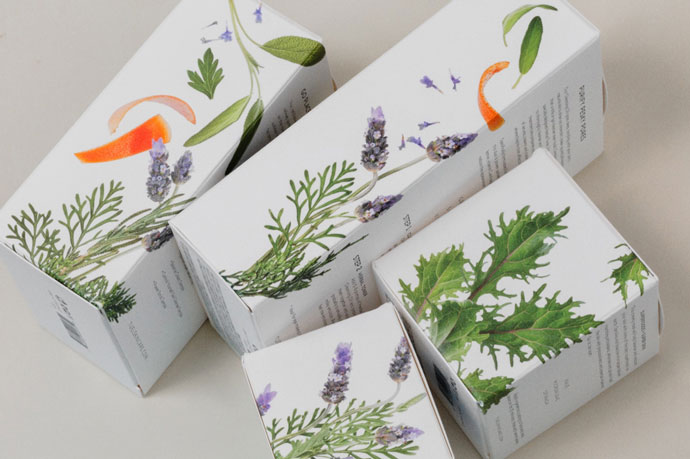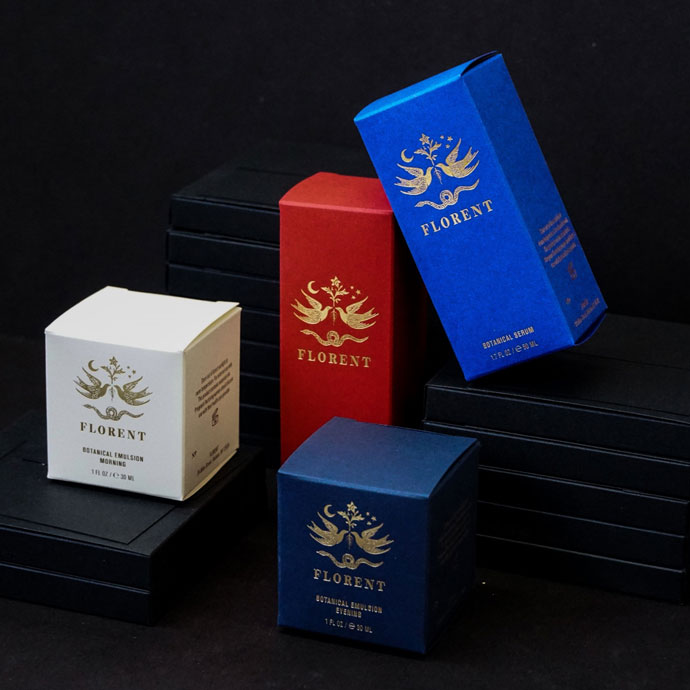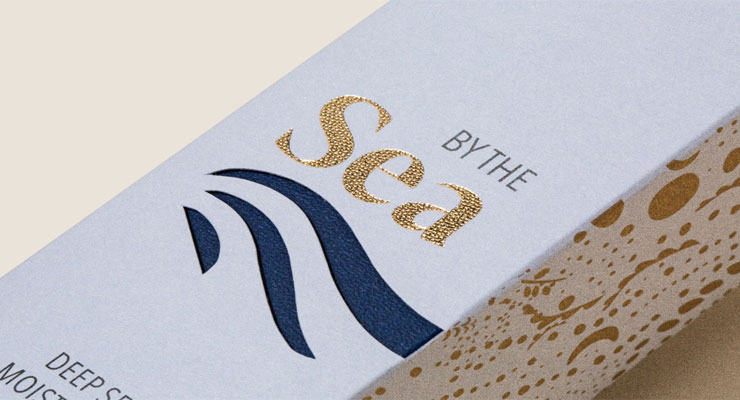Durability, function, and structure are critical considerations for any packaging, but savvy consumers shop with eco-friendly expectations and an eye for design. As we move closer to 2023, these three innovative packaging design trends are gaining traction in the beauty market.
1. Minimalistic Design
Less is more. When shelves are saturated with bright colors and bold statements, simplicity stands out. Uncomplicated, clean design with minimal decoration communicates a premium vibe and a modern sophistication. Beauty brands that cut through the noise succeed in focusing consumer attention on their key selling points, giving consumers a clear understanding of what the product is and why they should choose it over the competition.

When considering minimal design, paper choice becomes even more critical. Premium, textured papers can create a powerful brand aesthetic that speaks volumes and begs to be touched. Laurel Skin Care, made from 100% organic, raw, unrefined plant materials, uses minimalistic packaging design to capture their products' pure, artisanal essence. Subtle techniques like blind embossing and letterpress are growing in popularity because they add visual and tactile interest, subconsciously communicating premium without overcomplicating the design.
2. Sustainable Solutions
Consumer awareness of packaging waste in oceans and landfills has put a spotlight on companies willing to evolve to meet sustainable goals. A 2020 survey found that consumers have adapted their purchasing behaviors to reflect shifting environmental preferences, and 70% of consumers are actively taking steps to reduce their use of plastic packaging.1

Premium brands are moving away from laminated boxes that have been heavily foiled and decorated and are instead choosing uncoated, recyclable papers or papers with high post-consumer waste content. All-natural skincare company Tuel pairs thoughtful but minimal designs with sustainable paper that has an organic feel—the perfect combination for their all-natural brand promise. To further educate consumers, some brands have even opted to print recycling instructions or ideas for repurposing the container right on the packaging.
3. Color Counts
Color is never just an afterthought. In addition to being one of the most important elements of any brand identity, certain colors have come to communicate more about a company's mission. Packaging that uses earth tones or kraft colors is considered eco-friendly, especially when paired with a texture inspired by nature.

In today's highly competitive retail environment, where details matter, a dyed-through board eliminates white edges that can look unfinished. Colored stocks also transform the paper into a branding element, easily decorated with a simple foil or single-color print rather than first requiring a flood coating with ink and varnish.
The role of packaging in building relationships between brand and consumer is huge. The right packaging paper isn't just an element of design. It's a crucial touchpoint that reflects what your customers can expect from your brand.
Sources:
1. Meet the 2020 Consumers Driving Change, IBM, https://www.ibm.com/downloads/cas/EXK4XKX8
1. Minimalistic Design
Less is more. When shelves are saturated with bright colors and bold statements, simplicity stands out. Uncomplicated, clean design with minimal decoration communicates a premium vibe and a modern sophistication. Beauty brands that cut through the noise succeed in focusing consumer attention on their key selling points, giving consumers a clear understanding of what the product is and why they should choose it over the competition.

When considering minimal design, paper choice becomes even more critical. Premium, textured papers can create a powerful brand aesthetic that speaks volumes and begs to be touched. Laurel Skin Care, made from 100% organic, raw, unrefined plant materials, uses minimalistic packaging design to capture their products' pure, artisanal essence. Subtle techniques like blind embossing and letterpress are growing in popularity because they add visual and tactile interest, subconsciously communicating premium without overcomplicating the design.
2. Sustainable Solutions
Consumer awareness of packaging waste in oceans and landfills has put a spotlight on companies willing to evolve to meet sustainable goals. A 2020 survey found that consumers have adapted their purchasing behaviors to reflect shifting environmental preferences, and 70% of consumers are actively taking steps to reduce their use of plastic packaging.1

Premium brands are moving away from laminated boxes that have been heavily foiled and decorated and are instead choosing uncoated, recyclable papers or papers with high post-consumer waste content. All-natural skincare company Tuel pairs thoughtful but minimal designs with sustainable paper that has an organic feel—the perfect combination for their all-natural brand promise. To further educate consumers, some brands have even opted to print recycling instructions or ideas for repurposing the container right on the packaging.
3. Color Counts
Color is never just an afterthought. In addition to being one of the most important elements of any brand identity, certain colors have come to communicate more about a company's mission. Packaging that uses earth tones or kraft colors is considered eco-friendly, especially when paired with a texture inspired by nature.

In today's highly competitive retail environment, where details matter, a dyed-through board eliminates white edges that can look unfinished. Colored stocks also transform the paper into a branding element, easily decorated with a simple foil or single-color print rather than first requiring a flood coating with ink and varnish.
The role of packaging in building relationships between brand and consumer is huge. The right packaging paper isn't just an element of design. It's a crucial touchpoint that reflects what your customers can expect from your brand.
Sources:
1. Meet the 2020 Consumers Driving Change, IBM, https://www.ibm.com/downloads/cas/EXK4XKX8













